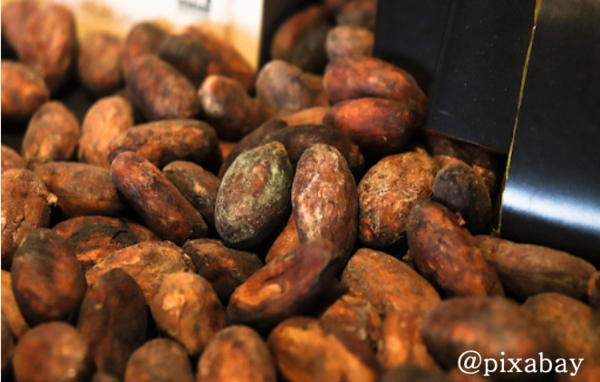
Do you like chocolate? From regular chocolate bars to chocolate syrup, chocolate drinks, and chocolate spreads, chocolate products are ubiquitous in our daily lives. However, due to the recent increase in the price of cacao, the raw material used in chocolate production, these products have also seen a rise in price. Even alternative chocolates are being developed to replace them, but what exactly makes chocolate production difficult, and how are alternative chocolates made?
The Soaring Price of Chocolate: Causes and Responses
Chocolate, made primarily from cacao beans, goes through a very complex process. First, cacao beans, which are the key ingredient, are cultivated in regions near the equator, such as South America, Africa, and Southeast Asia. After the beans are harvested, they are placed in banana leaves or wooden boxes and naturally fermented for 5 to 7 days, during which the unique taste and aroma of chocolate are developed.

After fermentation, the cacao beans are dried for 1 to 2 weeks before being roasted to develop a deeper flavor and aroma. This is the stage where so-called cacao nibs are produced. The roasted cacao is then crushed to create cacao mass, and various ingredients such as sugar, milk, and vanilla are added to adjust the flavor. Finally, the mixture is stirred at high temperatures to enhance the texture and flavor, and then it is shaped and packaged.
So why has the price of chocolate, which is made through this intricate process, risen so sharply in recent times? The most fundamental reason is the skyrocketing price of cacao beans, the raw material for chocolate. According to Reuters, the price of cacao exceeded $12,000 per ton in the New York futures market in April 2024, more than three times higher than in January 2024. Due to global climate change, temperatures are rising, precipitation is decreasing, and dry seasons are increasing. This causes crop failures in cacao-producing regions.
In particular, West Africa has been experiencing severe El Niño events since last year. Côte d'Ivoire and Ghana, the major regions responsible for producing more than 60% of the world’s cacao supply, are located in West Africa. El Niño is a climate phenomenon in which the sea surface temperature of the eastern Pacific Ocean rises above average, leading to rapid climate changes. According to the international research institute CIAT, by 2050, 89.5 to 100% of the current cacao cultivation area may become unsuitable for cultivation.
In addition, the global supply chain was disrupted during the COVID-19 pandemic, leading to interruptions in the transportation and distribution of cacao. Even after the pandemic is over, fluctuations in raw material prices persist, increasing uncertainty in the cacao market and making recovery difficult.
The bigger problem here is that even though the price of cacao has risen, local farmers are increasingly unwilling to grow cacao beans. This is because the governments of the cacao-producing countries purchase cacao through a system known as the “fixed price system,” meaning farmers do not benefit from the actual price increase.
The ‘fixed price system’ refers to a pricing policy that sets prices for a certain period to mitigate the impact of unstable price fluctuations. This system was introduced to prevent damage to farmers, but contrary to its original purpose, it is the government that benefits the most. The government purchases cacao from farmers at a set price and then sells it at a higher price on the international market.

Due to the rise in cacao prices, chocolate products prices have naturally increased.In fact, the market for high-end chocolate, already expensive, has expanded, while companies focused on low-priced chocolate have scaled back. In response to the continued increase in chocolate product prices, the Ministry of Agriculture, Food and Rural Affairs is pushing to add cacao to the list of items eligible for management stability funds within the food materials industry. Additionally, the government announced that it will impose tariffs on cacao products starting April 1.
In order to mitigate the apparent price increases of products, various measures are being implemented, such as launching products with less cocoa or reducing the amount of chocolate coating on existing products. For example, Chocolate brand Nestlé introduced a new product in the UK in January this year with one-third of the chocolate content of the original product, while Hershey’s is selling the chocolate coating of the existing product called ‘Chocolate Frosted Donut Kit Ka’ at half the usual amount. Meanwhile, interest in fair trade and ethical consumption has grown, and alternative raw materials and innovative products for cocoa beans are being developed to address the unavoidable impacts of the climate crisis.
Chocolate that thinks about the future and the environment, the emergence of alternative chocolate
As interest in climate change and environmental issues grows, research on sustainable food is also gaining momentum. In particular, the chocolate industry is grappling with challenges such as deforestation caused by the expansion of cacao farms and high carbon emissions, leading to increased calls for viable alternatives. Amid this trend, ‘Alternative chocolate’ is emerging as a promising solution.
Alternative chocolate refers to chocolate made without cocoa or cocoa butter, and is often called ‘cocoa-free’ or ‘tree-free’ chocolate. A notable example is UK-based company Nukoko, which produces chocolate using fava beans instead of cacao beans. This fava bean-based technology can produce chocolate without causing deforestation, and can reduce carbon emissions by up to 90%. It is also rich in natural antioxidants, which are beneficial for your health.
In addition, Circe Bioscience in the US is developing triglyceride molecules that can replace cocoa butter using gas fermentation technology, and Planet A Foods in Germany is introducing cocoa-free chocolate made from oats and sunflower seeds. In Israel, researchers are actively developing lab-grown chocolate made using cell culture technology — chocolate that does not come from trees.
Alternative chocolate not only helps consumers and businesses save money on cocoa-related costs, but it also has a significant positive impact on the environment. According to research by Voyage Foods, their alternative chocolate can reduce greenhouse gas emissions by up to 84%, water usage by 99%, and sugar content by 30%, all while preserving the taste and texture of traditional chocolate. It also significantly lowers the overall carbon footprint and environmental impact compared to conventional chocolate. According to research by Voyage Foods, their alternative chocolate can reduce greenhouse gas emissions by up to 84%, water usage by 99%, and sugar content by 30%, all while preserving the taste and texture of traditional chocolate. It also significantly lowers the overall carbon footprint and environmental impact compared to conventional chocolate.
However, alternative chocolates are not yet considered a perfect solution. They are currently more expensive than traditional chocolates and exhibit subtle differences in taste and texture.
Alternative chocolate is still in its early stages, but with technological advancements and lower production costs, it has the potential to become an innovative alternative that delivers the taste and experience of traditional chocolate while protecting the environment. As efforts toward a sustainable future continue, expectations are rising that alternative chocolate will become the new standard in the chocolate market.
The phrase ‘the extinction of chocolate’ may sound unusual, but as the climate crisis occurs worldwide, it is fair to say that this familiar treat is at risk of disappearing. Not only chocolate, but many everyday food ingredients we take for granted may vanish as environmental conditions continue to change rapidly. That is why we must keep making wise choices that consider both the environment and the sustainability of life.

